As one of the most attractive parts of the English countryside, the Cotswolds region has inspired many creative minds over the centuries – this is why it is our next instalment of regional art history, where we look into the many famous Cotswolds artists and craftspeople who have called this area their home or taken great inspiration from their visit.
 Above: an illustration of the Cotswolds landscape by Ellis Martin
Above: an illustration of the Cotswolds landscape by Ellis Martin
In this article, we will discover more about the artists who flourished there and the artworks produced in such beautiful landscapes, including the Broadway colony who stayed in the area during the 19th century and early 20th century to work in idyllic surroundings.
John Singer Sargent (1856-1925)
One of the most famous artists of the Edwardian era, Singer Sargent trained in Paris before moving to London following a scandal over his infamous Portrait of Madame X. Along with several other artists and writers, many with American backgrounds, Singer Sargent had resided in the remote town of Broadway. This popular location would inspire a new artistic colony to emerge, known as The Broadway Group.
 Above: a detail from John Singer Sargent’s Carnation Lily Lily Rose, 1887
Above: a detail from John Singer Sargent’s Carnation Lily Lily Rose, 1887
John Singer Sargent’s time spent in The Cotswolds resulted in the creation of Carnation, Lily, Lily, Rose from 1887. This popular artwork depicts two girls surrounded by lilies, roses and lanterns, allowing Singer Sargent to use his immense skill in colour and light to capture a vivid scene. This painting was purchased by the Tate gallery soon after its successful exhibition at The Royal Academy and remains there today.
Charles Robert Ashbee (1863-1942)
Charles Robert Ashbee was a key figure in the arts and crafts movement, as well as a textile and jewellery designer in British art nouveau. Ashbee was also an architect who designed buildings in Sicily, Budapest and London. In 1888, he founded the Guild and School of Handicraft which moved to Chipping Campden in 1902 due to the rising costs of London and the sympathetic community in the Cotswolds which welcomed craftsmen and artists. The school produced metalwork, enamels and furniture – all handmade, against the idea of modern machinery.
 Above: a decorative bowl by Charles Robert Ashbee dated to 1902-1904
Above: a decorative bowl by Charles Robert Ashbee dated to 1902-1904
Francis Davis Millet (1848-1912)
Born in the United States, Millet was one of the first to ‘discover’ the town of Broadway as a perfect place for artists and writers. He resided in Farnham House and Russell House and formed The Broadway Group alongside John Singer Sargent. One of his most famous works entitled Between Two Fires was composed at Abbot’s Grange mansion which he had reconstructed with William Morris as a studio space.
 Above: The Widow by Francis Davis Millet
Above: The Widow by Francis Davis Millet
Tragically, Millet was on board the Titanic, dying in the disaster after helping women and children into lifeboats. His artist friends in Broadway oversaw the construction of a Lychgate at the entrance of a graveyard in St. Eadburgha’s Church in his honour.
Frances Emilia Crofton (1822-1910)
A famed 19th century landscape artist, Frances Emilia Crofton is well known for publishing her original work as lithograph prints. She and her husband lived between Ireland and England, with a residence on the edge of the Cotswolds at Clarendon Villas in Cheltenham, Gloucestershire.
 Above: a selection of landscape lithographs by Frances Emilia Crofton
Above: a selection of landscape lithographs by Frances Emilia Crofton
In 1854 she raised the equivalent of over £5000 for orphans by selling her views of Britain and Ireland in a series of 8 lithograph prints. Although her original landscape paintings seem to have been lost, the prints were so popular that many remain today in public and private collections.
Edwin Austen Abbey (1852-1911)
An illustrator and painter, Edwin Austen Abbey was well known for his depictions of Shakespearean scenes and great murals. He also officially composed the painting of Edward VII’s coronation, which still resides in Buckingham Palace. As an American artist in Britain, he was friendly with the rest of the Broadway group in the Cotswolds.
 Above: King Lear Scene I by Edwin Austen Abbey
Above: King Lear Scene I by Edwin Austen Abbey
L.S. Lowry (1887-1976)
Known for his northern street scenes and industrial landscapes, the majority of Lowry’s artworks depict scenes from Lancashire. However, Lowry did visit the Cotswolds in 1947. His work from this period includes winter scenes of Northleach, Stow-on-the-Wold, Bourton-on-the-Water, and Moreton-in-Marsh.
Frederick Landseer Maur Griggs (1876-1938)
Griggs was a talented etching artist, working primarily for the Highways and Byways regional guides as an illustrator. He collaborated with Norman Jewson, Ernest Gimson and other arts and crafts members in the Cotswolds. His original prints include 57 romantic landscapes including ruined abbeys and pastoral scenes. Today many of his works can be found in museums worldwide, including the Ashmolean Museum and Boston Public Library.
 Above: two etchings by Frederick Landseer Maur Griggs
Above: two etchings by Frederick Landseer Maur Griggs
William Morris (1834-1896)
World-renowned designer William Morris spent his summers in the Cotswolds at Kelmscott Manor which he had on a joint lease with Pre-Raphaelite painter Dante Gabriel Rossetti. Morris came to the Cotswolds in an attempt to get away from the pollution of London and his increasing status as a celebrated figure. Enjoying the natural beauty of the 17th century manor house, he founded the Kelmscott Press in 1891, named after his summer abode, to publish limited-edition, illuminated print books. In 1879, he purchased a home in Hammersmith which he named Kelmscott House.
 Above: a detail from William Morris’ Honeysuckle design dated to 1876
Above: a detail from William Morris’ Honeysuckle design dated to 1876
George Henry Boughton (1833-1905)
George Henry Boughton was another American artist who came to Broadway, Worcestershire to marvel in the beauty of the Cotswolds. A talented painter, he specialised in landscape and genre painting, as well as illustrations for books such as Nathaniel Hawthorne’s The Scarlet Letter. When Vincent van Gogh was in London he viewed Boughton’s work Godspeed! Pilgrims Setting Out for Canterbury, later writing to his brother about his admiration for it. The painting is now housed in the Van Gogh Museum in Amsterdam.
Alfred Parsons (1847-1920)
Parsons was known for beautiful botanical illustrations and landscape paintings. It is of course no surprise that he found further inspiration in the Cotswolds, where he became a founding member of the Broadway group alongside Singer Sargent, Millet and Abbey. As well as artistic pursuits, Parsons also specialised in garden designs, creating a garden for the group at Russell House. A master at watercolours, Alfred Parsons became president of the Society of Painters in Watercolours in 1905.
 Above: a selection of Alfred Parson’s illustrations from Ellen Willmott’s The Genus Rosa
Above: a selection of Alfred Parson’s illustrations from Ellen Willmott’s The Genus Rosa
Alfred Parsons illustrated Ellen Willmott’s two volumes of The Genus Rosa, providing 132 watercolours of roses which can now be found in the Lindley Library, London. Willmott was so impressed by the work that she commissioned Parsons to also paint her gardens.
How can we help?
If you have an artwork, piece of furniture or specialist item which requires restoration, please contact our helpful team for further advice and information.
You can email [email protected] or call 0207 112 7576.

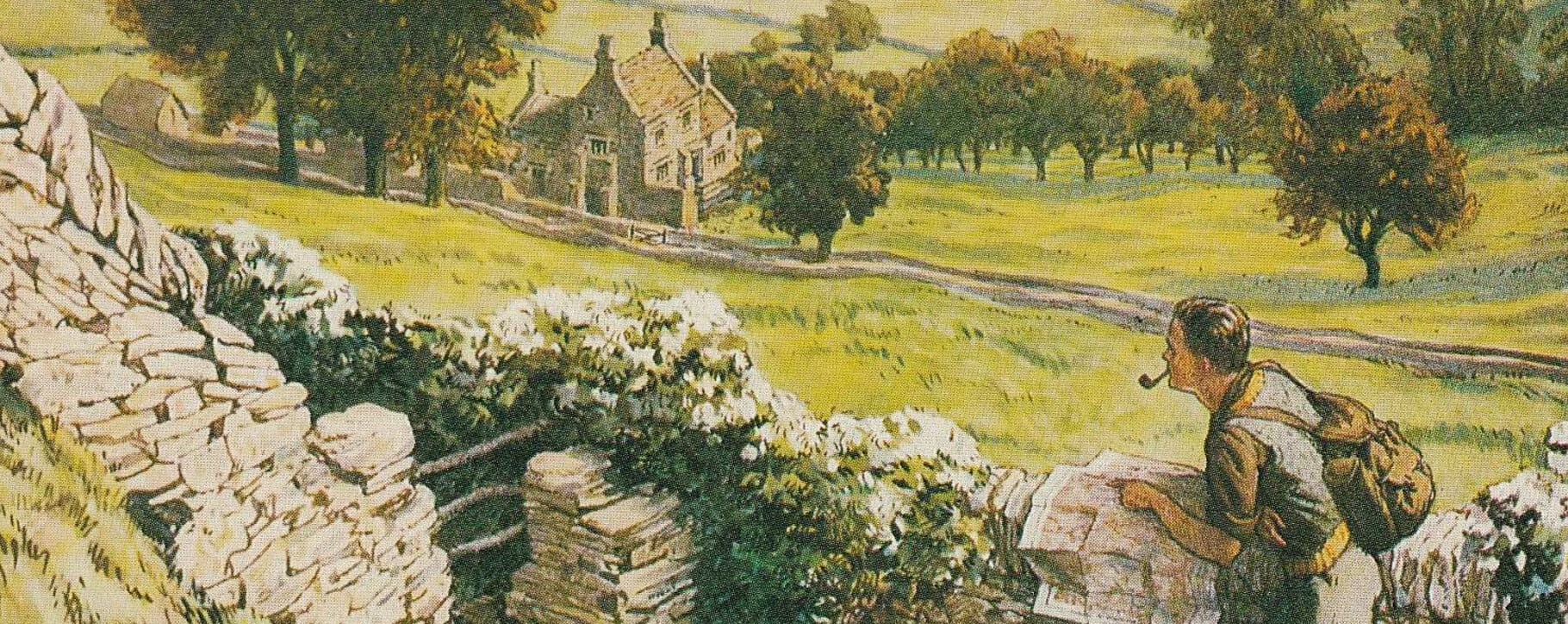 Above: an illustration of the Cotswolds landscape by Ellis Martin
Above: an illustration of the Cotswolds landscape by Ellis Martin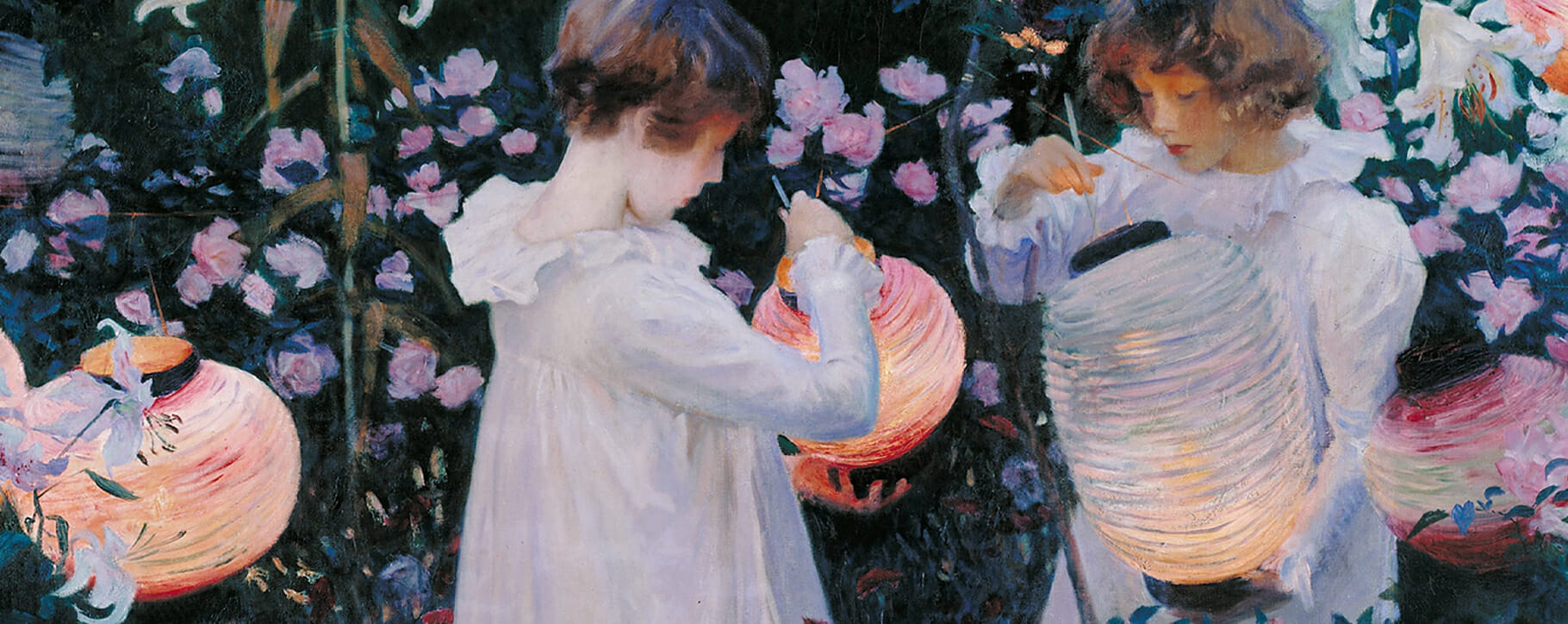 Above: a detail from John Singer Sargent’s Carnation Lily Lily Rose, 1887
Above: a detail from John Singer Sargent’s Carnation Lily Lily Rose, 1887 Above: a decorative bowl by Charles Robert Ashbee dated to 1902-1904
Above: a decorative bowl by Charles Robert Ashbee dated to 1902-1904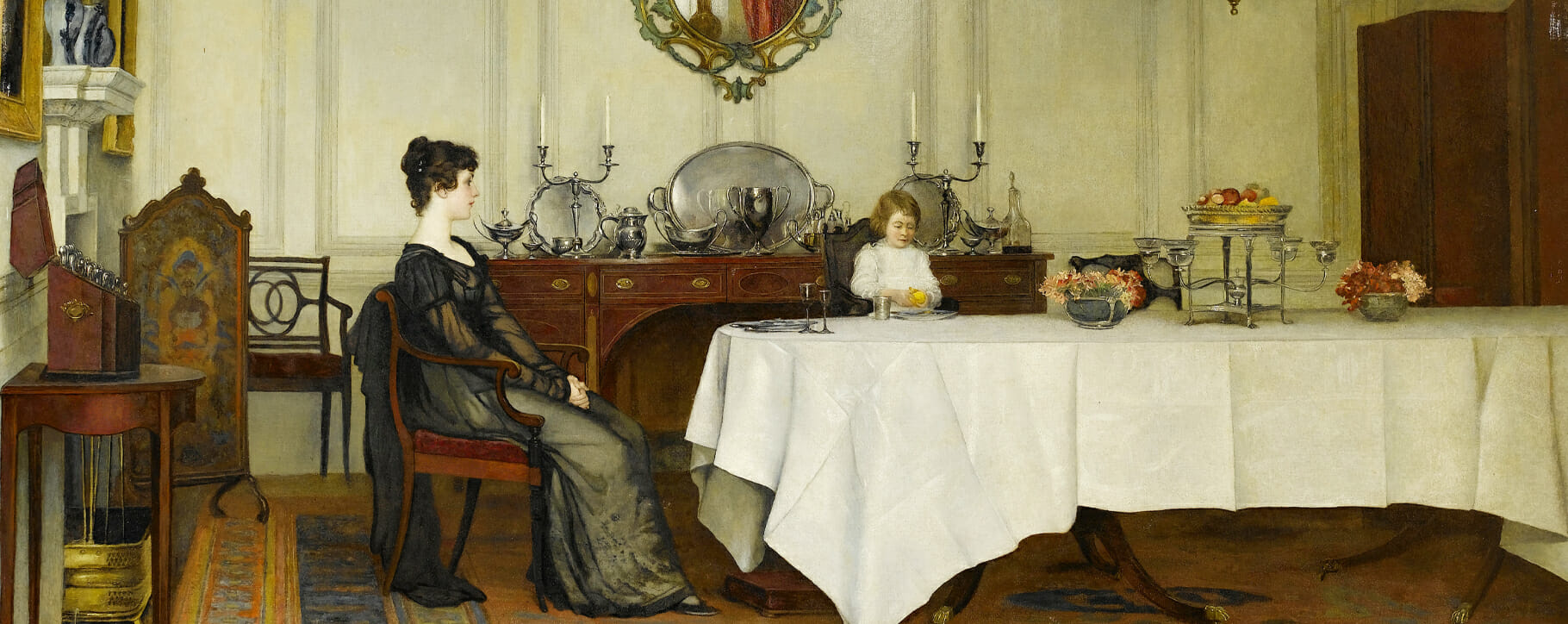 Above: The Widow by Francis Davis Millet
Above: The Widow by Francis Davis Millet 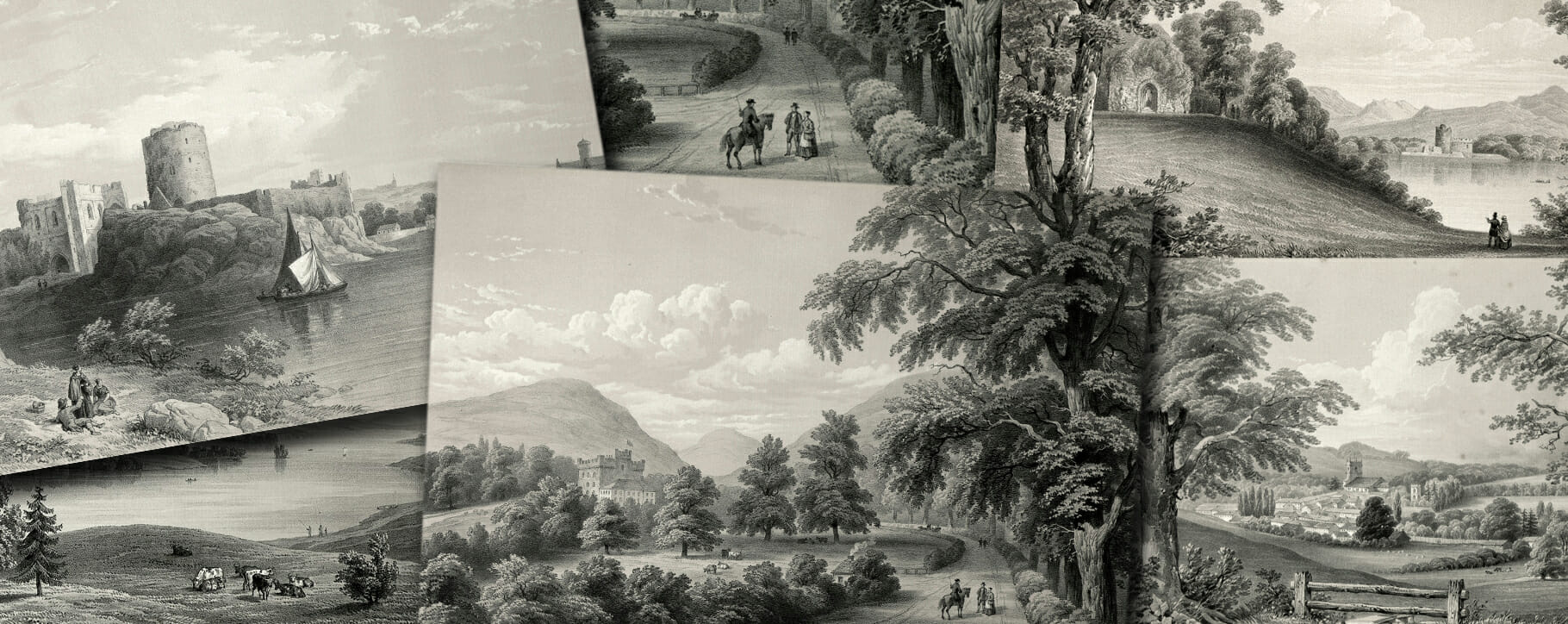 Above: a selection of landscape lithographs by Frances Emilia Crofton
Above: a selection of landscape lithographs by Frances Emilia Crofton Above: King Lear Scene I by Edwin Austen Abbey
Above: King Lear Scene I by Edwin Austen Abbey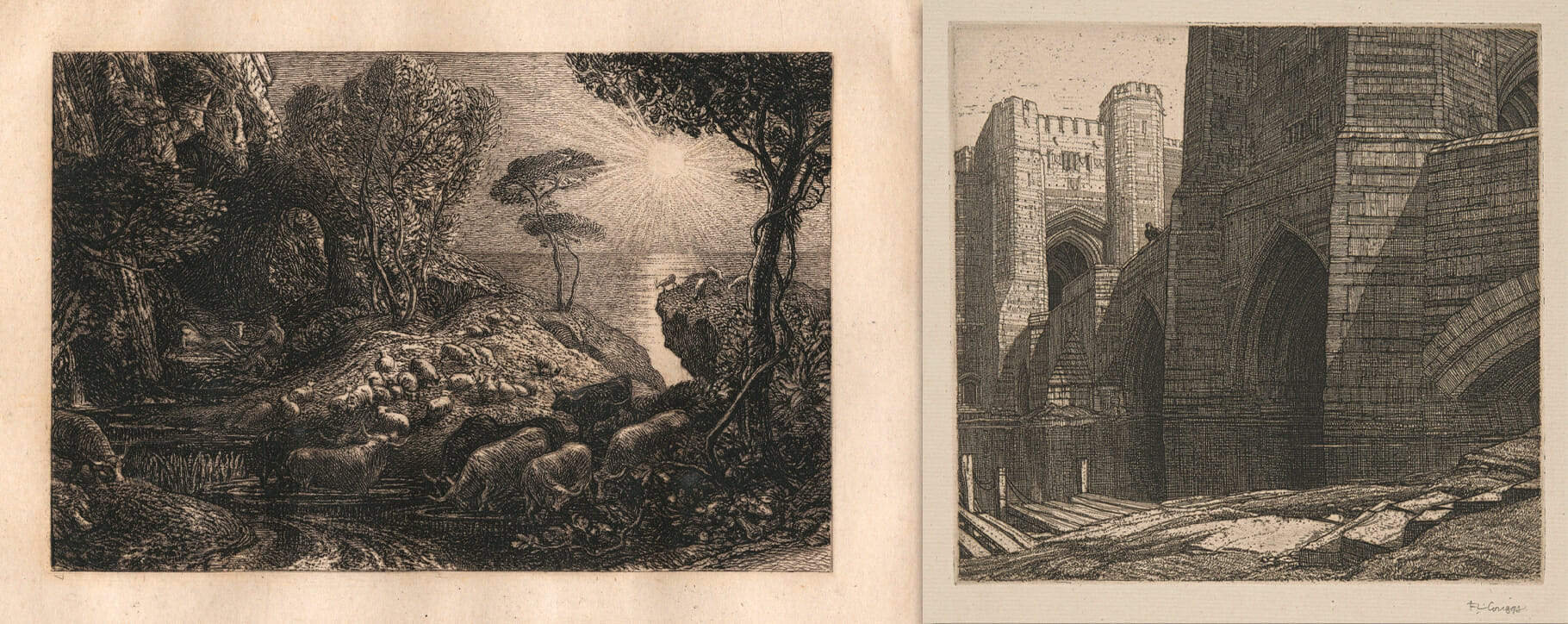 Above: two etchings by Frederick Landseer Maur Griggs
Above: two etchings by Frederick Landseer Maur Griggs Above: a detail from William Morris’ Honeysuckle design dated to 1876
Above: a detail from William Morris’ Honeysuckle design dated to 1876 Above: a selection of Alfred Parson’s illustrations from Ellen Willmott’s The Genus Rosa
Above: a selection of Alfred Parson’s illustrations from Ellen Willmott’s The Genus Rosa 




